
“In the west almost all Spain had been subjugated, except that part which adjoins the cliffs where the Pyrenees end and is washed by the nearer waters of the Ocean. Here two powerful nations, the Cantabrians and the Asturians lived in freedom from the rule of Rome.”—Second-century a.d. Roman historian Florus, Epitome of Roman History
By the final decades of the first-century b.c., Rome had grown from a small city-state on the Italian Peninsula into a vast empire whose territories completely encompassed the shores of the Mediterranean Sea. Its possessions extended inland as well, as much of Western Europe had succumbed to the relentlessly advancing Roman armies. Yet one small region remained impervious to Roman rule. This was a narrow swath of mountainous terrain wedged between the Northern Meseta and the Bay of Biscay, home to two Celtic tribes: the Cantabrians and the Asturians.
Rome began its conquest of Iberia in 218 b.c., but by the time Augustus (r. 27 b.c.–a.d. 14) became emperor nearly two centuries later, this geographical pocket alone remained unconquered. In matters of war, the Romans did not suffer failure lightly, and in 26 b.c., they finally launched what would prove to be a decisive campaign to annex the territory. As part of a violent 10-year conflict now called the Cantabrian Wars, Roman legions camped in front of the walls of a site known today as Monte Bernorio. Situated along the southern border of the Cantabrians’ territory, this indigenous stronghold was vital to the continued independence of this notoriously bellicose people, as it safeguarded the roads and the mountain passes that led into their heartland. In the end, it would fall, and, so in turn would the rest of free Iberia.
This story is from the {{IssueName}} edition of {{MagazineName}}.
Start your 7-day Magzter GOLD free trial to access thousands of curated premium stories, and 9,000+ magazines and newspapers.
Already a subscriber ? Sign In
This story is from the {{IssueName}} edition of {{MagazineName}}.
Start your 7-day Magzter GOLD free trial to access thousands of curated premium stories, and 9,000+ magazines and newspapers.
Already a subscriber? Sign In
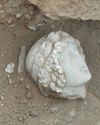
Digs & Discoveries - A Friend For Hercules - Archaeologists discovered a finely carved head depicting Apollo, god of the sun, music, and poetry.
While digging at the crossroads of the two main streets in the ancient city of Philippi in northern Greece, archaeologists discovered a finely carved head depicting Apollo, god of the sun, music, and poetry.
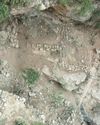
Digs & Discoveries - A Fortress Sanctuary - A sprawling 2,000-year-old fortress in the Zagros Mountains of Iraqi Kurdistan appears to have included a sanctuary dedicated to the ancient Persian water goddess Anahita.
A sprawling 2,000-year-old fortress in the Zagros Mountains of Iraqi Kurdistan appears to have included a sanctuary dedicated to the ancient Persian water goddess Anahita.
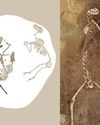
Like Cats And Dogs – Archeologist fund the skeleton of a male Eurasian lynx (Lynx lynx), a notoriously shy creature.
Оn the periphery of Zamárdi, an ancient lakeshore settlement in west-central Hungary, archaeologists uncovered a nearly five-foot-deep beehive-shaped pit with the skeletons of four adult dogs buried in successive shallow layers.
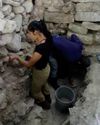
A Dynasty Born In Fire- How an upstart Maya king forged a new social order amid chaos
At the beginning of the Terminal Classic period (ca. A.D. 810-1000), many of the great kingdoms of the southern Maya lowlands-among them Tikal, Palenque, and Calakmul-were being abandoned or collapsing. For many years, scholars have assumed that most, if not all, the other kingdoms across the Maya world must have also been in steep decline.
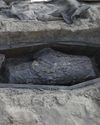
Medical Malfeasance - Archaeologists uncovered two coffins during excavations of a nineteenth-century cemetery in Quebec City that provide evidence of the illicit practice of diverting corpses for the study of human anatomy.
Archaeologists uncovered two coffins during excavations of a nineteenth-century cemetery in Quebec City that provide evidence of the illicit practice of diverting corpses for the study of human anatomy. Starting in 1847, medical students were required to have practical experience studying human anatomy, but legal options to procure cadavers were limited
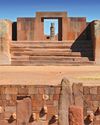
RISE AND FALL OF TIWANAKU
New dating techniques are unraveling the mystery of a sacred Andean city
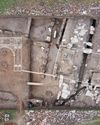
Making a Roman Emperor
A newly discovered monumental arch in Serbia reveals a family's rise to power in the late second century A.D.
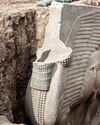
The Assyrian Renaissance
Archaeologists return to Nineveh in northern Iraq, one of the ancient world's grandest imperial capitals

Java's Megalithic Mountain
Across the Indonesian archipelago, people raised immense stones to honor their ancestors
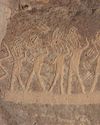
THE SONG IN THE STONE
Located in a desert gorge in southern Peru, Toro Muerto is one of the richest rock art sites in South America. It includes at least 2,600 boulders bearing petroglyphs, many featuring figures known as danzantes who appear to be dancing.